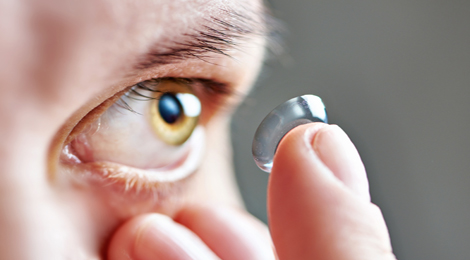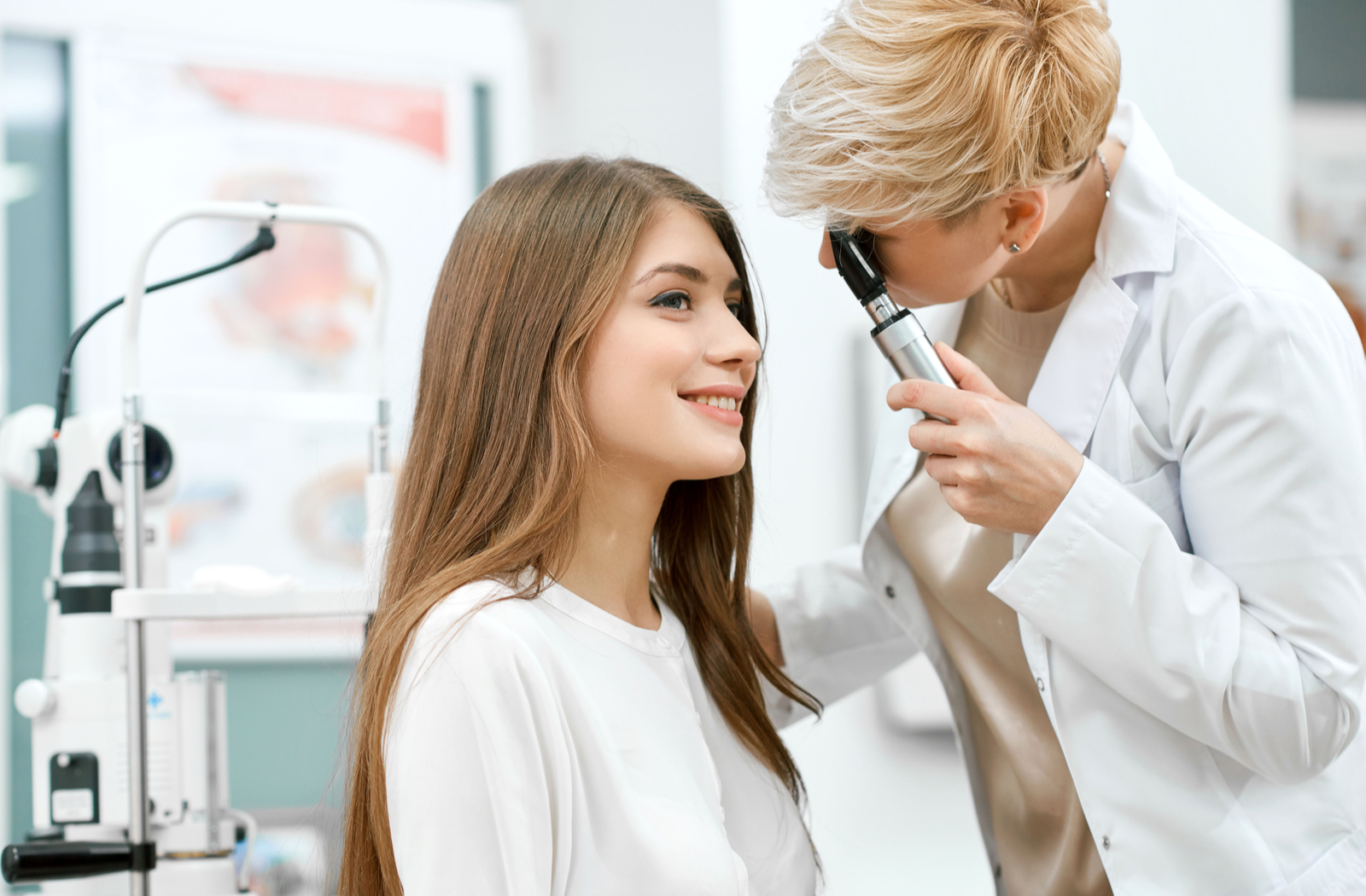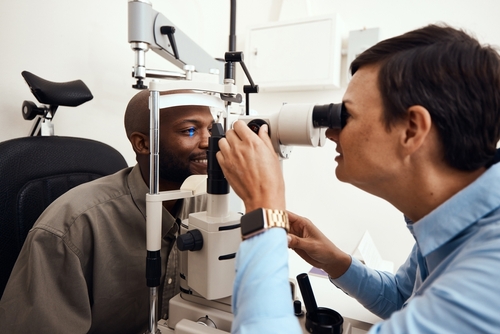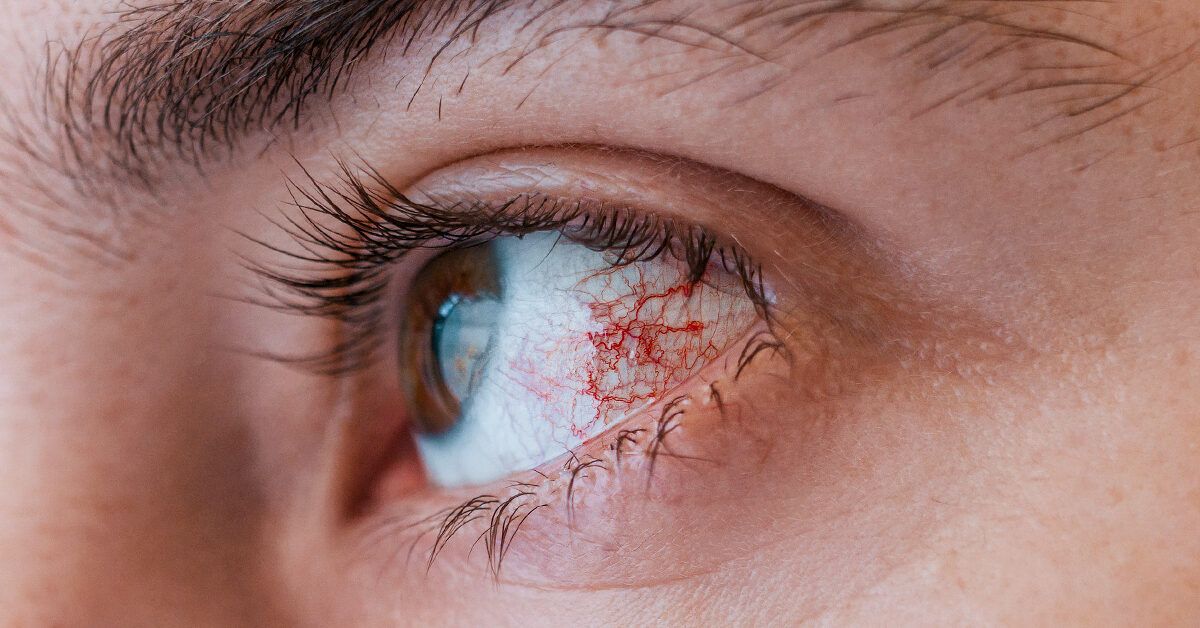
Diagnosis
In most cases, your health care provider can diagnose pink eye by asking about your recent health history and symptoms and examining your eyes.
Rarely, your provider may take a sample of the liquid that drains from your eye for laboratory analysis, called a culture. A culture may be needed if your symptoms are severe or if your provider suspects a high-risk cause, such as:
- A foreign body in your eye.
- A serious bacterial infection.
- A sexually transmitted infection.
Treatment
Pink eye treatment is usually focused on symptom relief. Your provider may recommend:
- Using artificial tears.
- Cleaning your eyelids with a wet cloth.
- Applying cold or warm compresses several times daily.
If you wear contact lenses, you’ll be advised to stop wearing them until treatment is complete. Your provider will likely recommend that you throw out soft contacts you’ve already worn.
Disinfect hard lenses overnight before you reuse them. Ask your provider if you should discard and replace your contact lens accessories, such as the lens case used before or during the illness. Also replace any eye makeup used before your illness.

In most cases, you won’t need antibiotic eye drops. Since conjunctivitis is usually viral, antibiotics won’t help. They may even cause harm by reducing their effectiveness in the future or causing a medicine reaction. Instead, the virus needs time to run its course. This typically takes around 2 to 3 weeks.
Viral conjunctivitis often begins in one eye and then infects the other eye within a few days. Your symptoms should gradually clear on their own.
Antiviral medicines may be an option if your viral conjunctivitis is caused by the herpes simplex virus.
Treatment for allergic conjunctivitis
If the irritation is allergic conjunctivitis, your health care provider may prescribe one of many different types of eye drops for people with allergies. These may include medicines that help control allergic reactions, such as antihistamines and mast cell stabilizers. Or your provider may recommend medicines to help control inflammation, such as decongestants, steroids and anti-inflammatory drops.
Nonprescription versions of these medicines also may be effective. Ask your provider about the best option for you.
You might reduce the severity of your allergic conjunctivitis symptoms by avoiding whatever causes your allergies.

Lifestyle and home remedies
To help you cope with the symptoms of pink eye until it goes away, try to:
- Apply a compress to your eyes. To make a compress, soak a clean, lint-free cloth in water and wring it out before applying it gently to your closed eyelids. Generally, a cool water compress will feel the most soothing, but you also can use a warm compress if that feels better to you. If pink eye affects only one eye, don’t touch both eyes with the same cloth. This reduces the risk of spreading pink eye from one eye to the other.
- Try eye drops. Nonprescription eye drops called artificial tears may relieve symptoms. Some eyedrops contain antihistamines or other medicines that can be helpful for people with allergic conjunctivitis.
- Stop wearing contact lenses. If you wear contact lenses, you may need to stop wearing them until your eyes feel better. How long you’ll need to go without contact lenses depends on what’s causing your conjunctivitis. Ask your health care provider whether you should throw away your disposable contacts, as well as your cleaning solution and lens case. If your lenses aren’t disposable, clean them thoroughly before reusing them.


Preparing for your appointment
Start by seeing your regular health care provider if you have any eye-related signs or symptoms that worry you. If your symptoms persist or get worse, despite treatment, your provider may refer you to an eye specialist (ophthalmologist).
Because appointments can be brief, and because there’s often a lot of ground to cover, it’s a good idea to be well prepared for your appointment. Here’s some information to help you get ready for your appointment and what to expect.
What you can do
- Be aware of any pre-appointment restrictions. At the time you make the appointment, be sure to ask if there’s anything you need to do in advance, such as stop wearing contact lenses or refrain from using eye drops.
- Write down any symptoms you’re experiencing, including any that may seem unrelated to the reason for which you scheduled the appointment.
- Make a list of all medications, vitamins or supplements that you’re taking.
- Write down questions to ask during your appointment.

Your time with your doctor is limited, so preparing a list of questions can help you make the most of your time together. List your questions from most important to least important in case time runs out. For pink eye, some basic questions to ask include:
- What’s the most likely cause of my symptoms?
- What kinds of tests do I need?
- What treatments are available?
- How long will I be contagious after starting treatment?
- Is there a generic alternative to the medicine you’re prescribing me?
- Are there any brochures or other printed material that I can take with me? What websites do you recommend?
- Do I need to come back for a follow-up visit?
In addition to the questions that you’ve prepared to ask, don’t hesitate to ask additional questions.

What to expect from your doctor
Your provider is likely to ask you a number of questions. Being ready to answer them may allow time later to cover points you want to address. You may be asked:
- When did you begin experiencing symptoms?
- Have your symptoms been continuous or occasional?
- How severe are your symptoms?
- Does anything improve your symptoms?
- What, if anything, appears to worsen your symptoms?
- Do your symptoms affect one eye or both eyes?
- Do you use contact lenses?
- How do you clean your contact lenses?
- How often do you replace your contact lens storage case?
- Have you had close contact with anyone who has pink eye or cold or flu symptoms?
What you can do in the meantime
Stop using contact lenses until you can see your provider. Wash your hands frequently to lessen the chance of infecting other people. Don’t share towels with other people for the same reason.































:max_bytes(150000):strip_icc():focal(749x0:751x2):format(webp)/Christianna-Apps-5-121825-ae06cb988405460987109364d7c522c3.jpg?w=1200&resize=1200,0&ssl=1)
:max_bytes(150000):strip_icc():focal(728x320:730x322):format(webp)/Dougherty-Dozen-121925-8cb8e5c784f24afa8d04fbffee3fef7d.jpg?w=1200&resize=1200,0&ssl=1)
:max_bytes(150000):strip_icc():focal(749x0:751x2):format(webp)/Mary-B-Premature-Baby-121925-8be6c0dca6784de0879dbeab3aab0038.jpg?w=1200&resize=1200,0&ssl=1)

:max_bytes(150000):strip_icc():focal(742x400:744x402)/Pierce-Brosnan-MobLand-New-York-Premiere-081625-8199483881a0468894490be96e3cbf8b.jpg?w=1200&resize=1200,0&ssl=1)







:max_bytes(150000):strip_icc():focal(749x0:751x2)/jennifer-aniston-111225-c037a077dd3043178ee27f4038312cd6.jpg?w=1200&resize=1200,0&ssl=1)